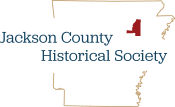
1920s
Oxen were often used to pull the heaviest loads, especially in muddy conditions, which were frequent since much of the land being cleared was along the river, and the river usually overflowed it’s banks twice a year, contributing to the outstanding fertility of...

1920s
The virgin timber harvest yielded gigantic logs, which were very difficult to remove from the bottomlands where they were cut. Several small logging railroads solved the problem for many loggers of this era. One such line, the Bonnerville and Southern...

1920s
This is a typical logging camp in which men would set up for a few days or weeks to clear the trees from an area and then haul them to one of the numerous sawmills in the county. Mules were stronger than horses, though not as easily governed, and they were the...

1920s
In 1923, the ladies of the Presbyterian church sponsored this Tom Thumb wedding, directed by Mrs. John Stayton. Pictured are, from left to right, (first row) Billy Stephens (ring bearer); (second row) Mary Wise, Fred M. Pickens, and Elizabeth Rossington; (third row)...

1920s
Bookstore owner I.D. Price Commissioned postcards of Newport scenes to be printed in Germany and sold in his store, along with books, musical instruments, and other paper goods. Postcards from Price’s store traveled all of the United States and are now valued...

1920s
Some of Newport’s leading men gather in front of one of their businesses in the 1920’s. From left to right are George L. Robinson, John Stayton, Joe Stayton, J.E. “Cap” Wilmans, Julian Logan, Sam Phillips, and Joe Walker. Landowners all, they...







